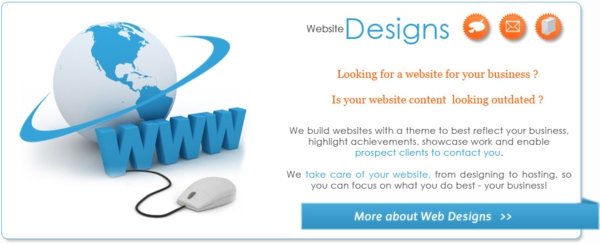Minimalism is a popular aesthetic for business sites. Done properly, it can be quite effective. For some businesses, it’s a natural choice because it tends to create a very refined and reserved look. If you’re considering a minimalistic aesthetic for your site, here are some pros and cons of this very popular design trend.
Pros
Minimalism as an aesthetic for web design presents the fewest possible distractions to your visitors. They’re generally presented with the text that you find important for them to read, the navigation menu and, perhaps, one or two images and your logo. Negative space tends to figure very prominently in the minimalistic aesthetic and many of the best minimalistic sites have more blank space than they do occupied space.

The big advantage in this particular style of design is the fact that it gives the image of a business that is very serious. There is nothing frivolous to distract people and there is nothing overly trendy about the site. The effect, in the end, is somewhat like the classic banker’s business card. A simple font, the information you need and nothing else. This simple sort of aesthetic is excellent for conveying information.
Minimalistic sites, because they are not overcrowded with many different elements, also tend to load very quickly. Particularly for tech businesses, this is a real advantage. When your site instantly pops up on the screen in all its glory, it does give an image of efficiency and technical ability.
Of course, minimalistic websites are also very easy to populate with content. Because you’ll have very little space to fill up, you can concentrate on making very high quality content that is brief, to the point and easy to read. These are just a few of the pros of going with a minimalistic design.
Cons
Despite all of their advantages, sites that have minimalistic aesthetics can also be quite dull. A white background with a logo and some text on it doesn’t really stand out much compared to other sites on the Internet. In fact, if it isn’t done properly, minimalistic aesthetics can make a site look underdeveloped or cheap. The key to avoiding this is working with a designer who knows the difference between doing as little as possible and using as little as possible to convey a great deal of important information.
As your site grows and becomes more complex, a minimalistic design may become something of a hindrance. Designs that are more complex allow you to fit more information on a page. If you start adding features to your page, you may find that the minimalistic framework you started out with is inadequate when you want to put more information or features up to keep your visitors interested.
One other thing that you may want to consider is that minimalism for business sites is a very popular trend at the moment. If you look at websites designed in the late 1990s or early 2000s, you’ll find that many of them look dated. If they haven’t been updated, they’ll still be representing trends that may have gone out of style a long time ago. For example, using images for navigation was once a very popular trend. Today, text menus are the norm and websites that have images that are used for navigating the site tend to look a bit old.
Talk to your web designer about whether or not minimalism might work as an aesthetic for your site. In some cases, whether or not it’s trendy won’t even matter. If it’s the right way to go for your website, something that’s trendy can easily become timeless and something that simple can be very powerful.
Matt Dandurand is the CEO of MediaContour.com, offering web design in Los Angeles, CA.

